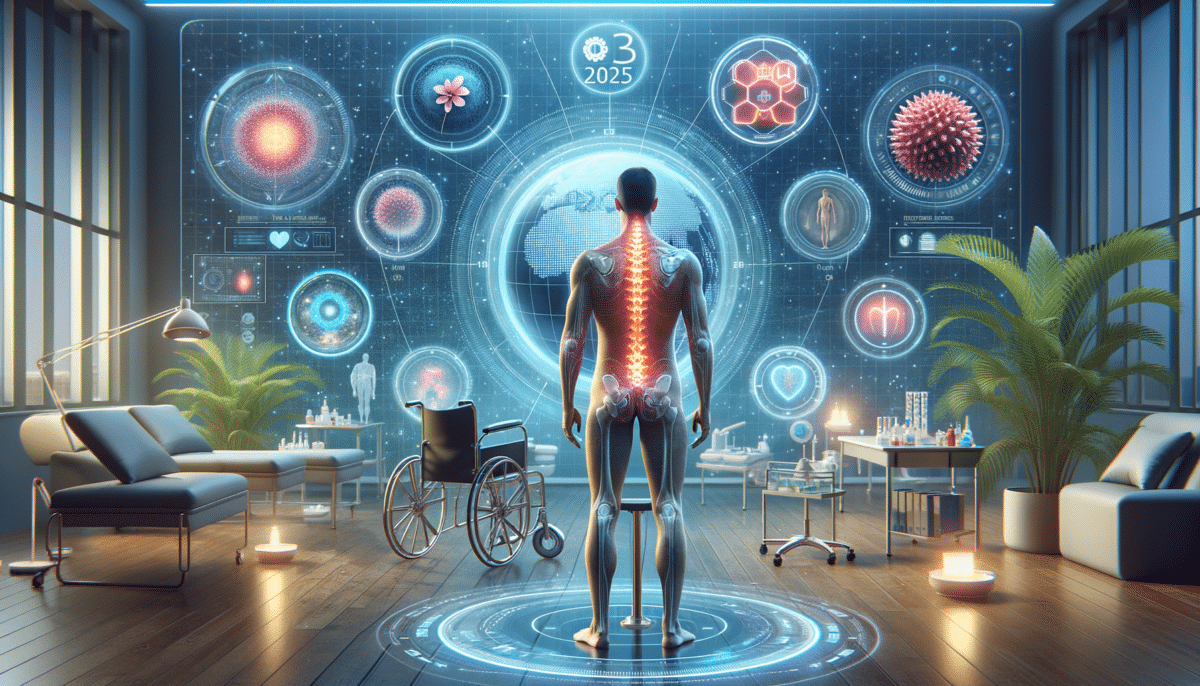Understanding Chronic Back Pain
Chronic back pain is a persistent condition that affects millions of individuals worldwide. It is defined as pain that lasts for more than three months, and it can significantly impact daily activities and overall quality of life. The causes of chronic back pain are varied, including degenerative disc disease, arthritis, and muscle or ligament strain. Understanding these causes is the first step in managing this condition effectively.
Recent studies indicate that lifestyle factors such as poor posture, lack of exercise, and obesity can exacerbate back pain. Therefore, addressing these factors through lifestyle modifications can be beneficial. For example, incorporating regular exercise, such as yoga or swimming, can strengthen the muscles supporting the spine and reduce pain.
Moreover, chronic back pain is not just a physical issue; it often has psychological components. Stress and anxiety can worsen pain perception, creating a vicious cycle of discomfort and mental distress. Thus, a holistic approach that considers both physical and psychological aspects is essential for effective management.
Modern Treatment Options
As medical research progresses, new treatment options for chronic back pain continue to emerge. One of the top options today includes minimally invasive procedures such as nerve ablation and spinal cord stimulation. These procedures target the nerves responsible for transmitting pain signals, providing relief without the need for extensive surgery.
Additionally, advancements in pharmacology have led to the development of medications that target specific pain pathways. For instance, some medications focus on reducing inflammation, while others aim to modify the way the brain perceives pain. It’s important for patients to work closely with their healthcare providers to determine the most appropriate medication regimen.
Complementary therapies, such as acupuncture and chiropractic care, have also gained recognition for their role in pain management. These therapies can be used alongside conventional treatments to enhance their effectiveness. Patients are encouraged to explore various options and find what works best for them.
The Role of Physical Therapy
Physical therapy is a cornerstone in the management of chronic back pain. It involves a personalized exercise program designed to improve flexibility, strength, and posture. Physical therapists work with patients to identify specific movements that alleviate pain and prevent further injury.
One of the key benefits of physical therapy is its focus on education. Patients learn about body mechanics and techniques to protect their back during daily activities. This knowledge empowers them to take an active role in their recovery and manage their pain more effectively.
Moreover, physical therapy often incorporates modalities such as heat, cold, and electrical stimulation to reduce pain and inflammation. These techniques can provide immediate relief and are useful tools in a comprehensive pain management plan.
Psychological Support and Pain Management
The psychological impact of chronic back pain cannot be overstated. Many individuals experience feelings of frustration, depression, and anxiety due to their condition. Psychological support, therefore, plays a crucial role in managing chronic pain.
Cognitive-behavioral therapy (CBT) is a highly rated approach that helps patients change negative thought patterns and develop coping strategies. CBT has been shown to reduce pain perception and improve overall well-being.
Support groups and counseling services also provide valuable platforms for individuals to share their experiences and receive encouragement. Knowing that they are not alone in their journey can be a powerful motivator for patients to continue with their treatment plan.
Future Directions in Back Pain Management
The future of back pain management looks promising with ongoing research and technological advancements. Personalized medicine, which tailors treatment plans based on an individual’s genetic makeup, is an exciting development on the horizon. This approach aims to optimize treatment effectiveness and minimize side effects.
Furthermore, wearable technology is being explored as a tool for monitoring posture and activity levels. These devices can provide real-time feedback, helping individuals make immediate adjustments to prevent pain exacerbation.
As our understanding of chronic back pain evolves, the integration of multidisciplinary approaches will likely become more prevalent. Combining medical, physical, and psychological therapies offers a comprehensive strategy to manage this complex condition effectively.
